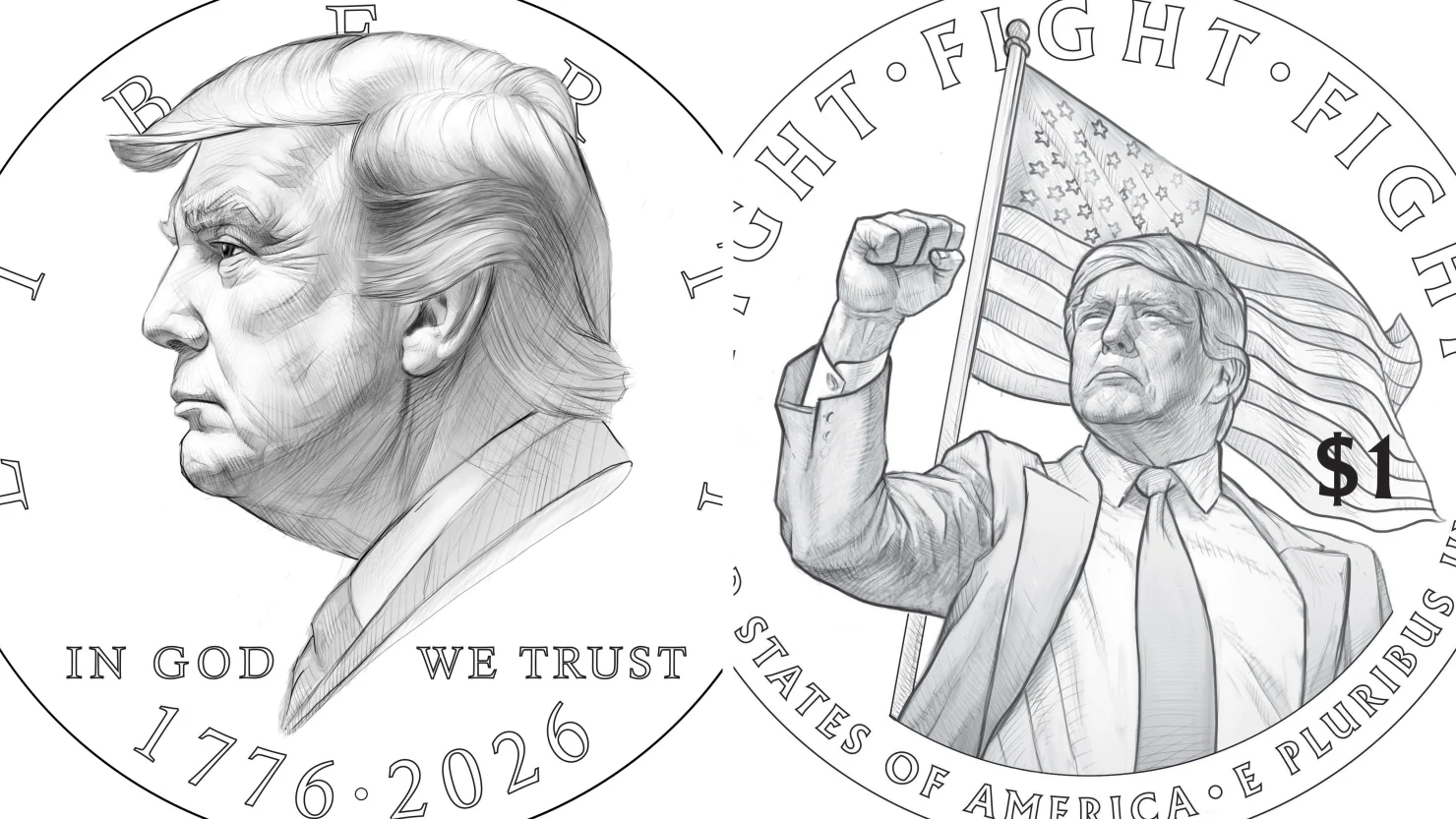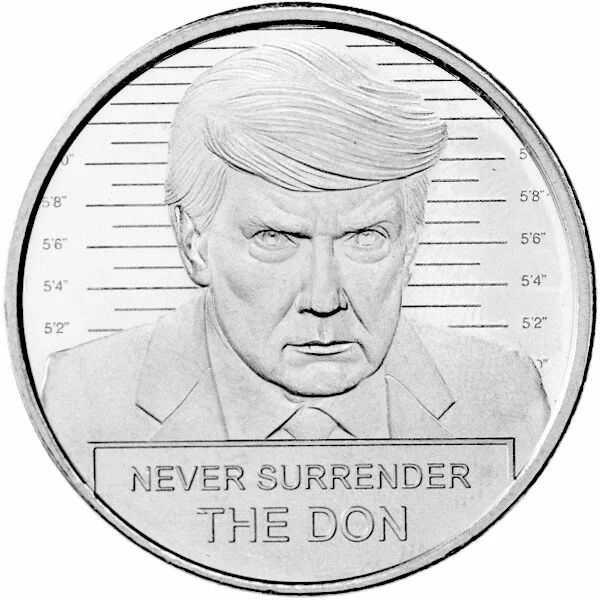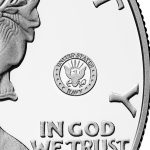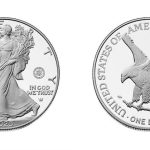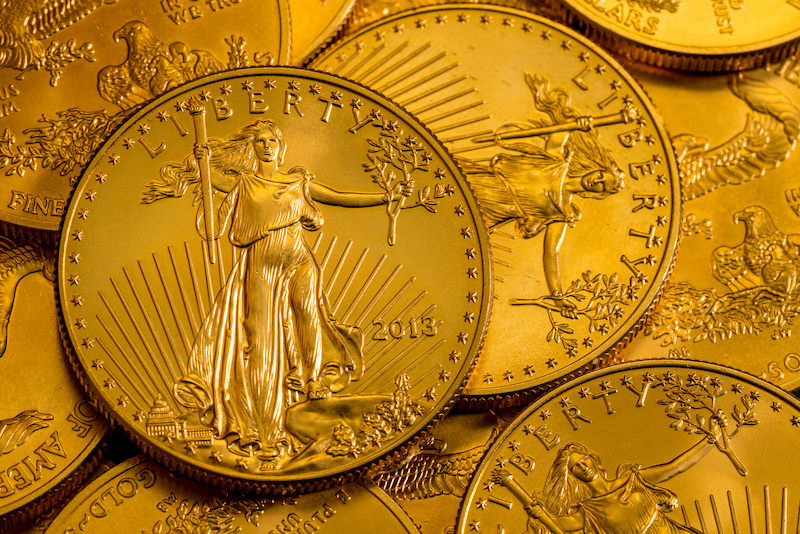Treasury confirmed first-draft images for a 2026 Semiquincentennial $1 coin featuring President Donald J. Trump’s profile on the obverse, and a raised-fist motif on the reverse. Final design isn’t chosen yet, but this is already a big moment for modern U.S. dollar coins. Here’s a straight-up, collector-first breakdown with history, specs context, and how to position your collection while we wait for the official Mint release.
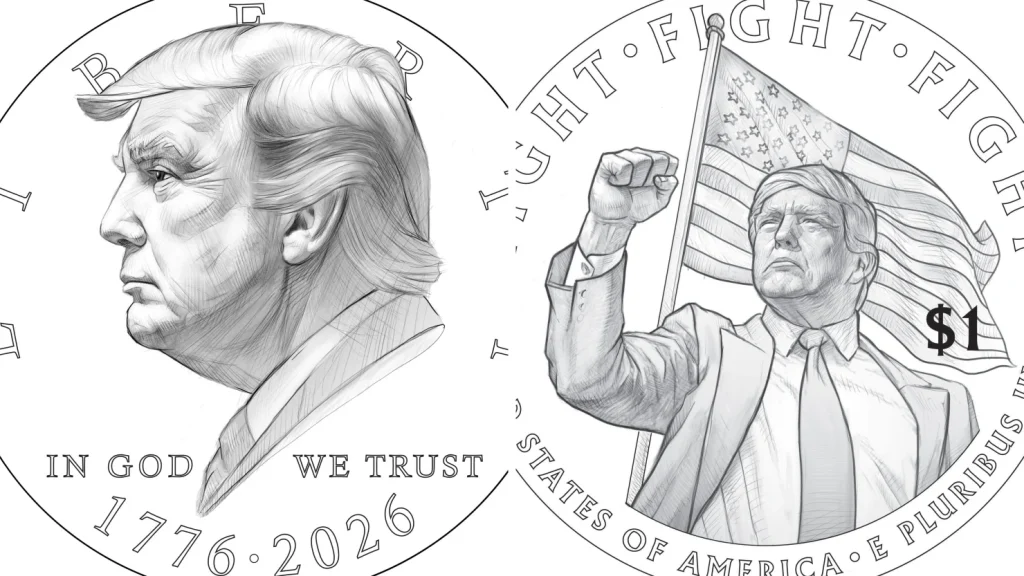
What’s actually been confirmed?
U.S. Treasurer Brandon Beach said the widely shared sketches are real drafts for a potential 2026 dollar coin celebrating America’s 250th anniversary. One side shows Trump’s profile with “LIBERTY,” “IN GOD WE TRUST,” and “1776–2026.” The other shows a clenched-fist scene with “FIGHT FIGHT FIGHT.” Treasury also stressed these are first drafts and the final design is TBD.
Reuters, WaPo, Politico, Axios, and others all reported the same core facts: draft designs exist, they were shared by the Treasurer, and a final selection hasn’t been made yet.
Why 2026? The legal backbone
This is tied to the Circulating Collectible Coin Redesign Act of 2020, a bipartisan law signed in January 2021 that specifically authorizes $1 coins in 2026 with designs emblematic of the U.S. semiquincentennial. In other words, Congress gave Treasury the playbook to issue special 2026 dollars.
The Mint’s own Semiquincentennial page says it’s prepping updates across circulating designs for 2026 and will share final designs later, so the timeline tracks.
Composition & formats: what collectors should expect
If this becomes part of the modern dollar-coin family (think Sacagawea/Native American and American Innovation programs), the default clad composition for numismatic $1 issues is the familiar manganese-brass formula: 6% zinc, 3.5% manganese, 2% nickel, balance copper (overall 88.5% Cu, 6% Zn, 3.5% Mn, 2% Ni). Proof and uncirculated dollar products have used this same alloy for years.
Context: the “golden dollar” look comes from an outer manganese-brass layer over a copper core, a system used since 2000 for small dollars and carried forward in the Native American and American Innovation series.
Reality check: until the Mint posts product pages, mintage limits, finishes (Proof/Unc), packaging, and on-sale dates are not final. Keep your buying plans agile and notifications on for the Mint’s updates.
How this fits into U.S. coin history (and why it’s interesting)
- Bicentennial throwback: In 1976, the Eisenhower dollar got a special double date 1776–1976 and a Liberty Bell/Moon reverse after a national design competition—arguably the modern template for big-anniversary dollars. Expect similar collector energy for 2026 releases.
- Living president trivia: The only living president to appear on a U.S. coin was Calvin Coolidge on the 1926 Sesquicentennial half dollar. That’s a deep-cut numismatic data point collectors will reference if 2026 dollars carry a living figure.
FAQs From Collectors
Will it circulate?
Even when they’re “circulating coin” programs, modern dollars typically don’t circulate widely; they’re mainly sold as numismatic products. That’s been the pattern for small dollar programs for years.
Silver version when?
The 2026 authorization covers $1 coins for the anniversary; official details on metals/finishes come from product pages. Until then, assume the standard dollar alloy unless the Mint announces otherwise.
Positive Collector Upside
- Story factor: 250th anniversary + a headline design = instant narrative gravity for set builders and type collectors alike. Think “marker coin” for the decade.
- Design energy: The double-date tradition and patriotic iconography have a strong track record of broad appeal (see the Bicentennial). If the final art lands, demand follows.
- On-ramp effect: Big, buzzy coins pull new collectors into the hobby—good for the market’s long run. (We saw this with recent high-profile commemoratives and multi-coin programs.)
A note on the law, minus the drama
Multiple outlets pointed out there are statutes governing portraits of living people, and 2026 coin provisions include restrictions on reverse designs. The bottom line for collectors: Treasury says the design isn’t final and they’ll share more later. Track the official updates from the U.S. Mint and Treasury.
Related Popular unofficial Trump-themed silver rounds
These are privately minted bullion rounds—not U.S. legal tender—but they’re a legit slice of the bullion market with strong collector demand. If you like the theme and want silver weight plus design variety, here are three widely shopped pieces with live dealer pricing pages:
- Trump – 45th President 1 oz Silver Round – a classic 45th-President portrait style that’s been around since 2020. Good entry point for theme sets.
- Mugshot Donald Trump 1 oz Silver Round – leans into contemporary pop-culture imagery; tends to attract crossover buyers beyond core stackers.
- 1 oz Trump “Never Surrender” Silver Round – pairs well with “defiant” motif collections; another popular design for display capsules.
How to think about them: buy for design + silver content + personal preference. Since they’re private issues, focus on low premiums, reputable mints/dealers, and clean secondary-market liquidity (i.e., rounds that consistently show up on price-comparison engines).
Bottom line (no fluff)
- Drafts are real; final design is pending.
- Expect standard small-dollar manganese-brass specs unless the Mint announces otherwise.
- Treat 2026 like a Bicentennial-level moment for modern type sets.
- Private Trump silver rounds are bullion collectibles, not legal tender—cool for theme stacking while we wait.
